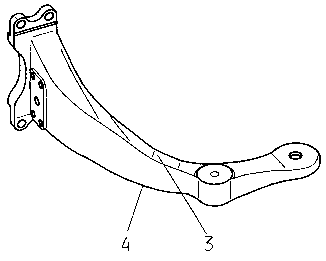Some of the information on this Web page has been provided by external sources. The Government of Canada is not responsible for the accuracy, reliability or currency of the information supplied by external sources. Users wishing to rely upon this information should consult directly with the source of the information. Content provided by external sources is not subject to official languages, privacy and accessibility requirements.
Any discrepancies in the text and image of the Claims and Abstract are due to differing posting times. Text of the Claims and Abstract are posted:
| (12) Patent Application: | (11) CA 2409322 |
|---|---|
| (54) English Title: | OFFSET AXLE |
| (54) French Title: | PONT PORTIQUE |
| Status: | Deemed Abandoned and Beyond the Period of Reinstatement - Pending Response to Notice of Disregarded Communication |
| (51) International Patent Classification (IPC): |
|
|---|---|
| (72) Inventors : |
|
| (73) Owners : |
|
| (71) Applicants : |
|
| (74) Agent: | NORTON ROSE FULBRIGHT CANADA LLP/S.E.N.C.R.L., S.R.L. |
| (74) Associate agent: | |
| (45) Issued: | |
| (86) PCT Filing Date: | 2001-06-02 |
| (87) Open to Public Inspection: | 2002-11-15 |
| Availability of licence: | N/A |
| Dedicated to the Public: | N/A |
| (25) Language of filing: | English |
| Patent Cooperation Treaty (PCT): | Yes |
|---|---|
| (86) PCT Filing Number: | PCT/EP2001/006315 |
| (87) International Publication Number: | EP2001006315 |
| (85) National Entry: | 2002-11-15 |
| (30) Application Priority Data: | ||||||
|---|---|---|---|---|---|---|
|
The offset axle for buses has a housing in which a differential is located,
said differential being connected to two axle shafts; and a suspension for
connecting the housing to the vehicle. Said suspension has single or multiple
part spring carriers which consist of corelessly, completely cast metal. Humps
can be provided in the area of the curvature between the spring element and
the housing in order to increase strength.
Le pont portique d'autocars présente, d'une part, un carter qui abrite un différentiel, lequel est relié à deux arbres d'essieu et, d'autre part, une suspension permettant de relier le carter au véhicule et présentant des supports de ressorts constitués d'une ou de deux pièce(s). Les supports de ressorts sont des pièces moulées pleines sans noyau. Dans la zone de courbure entre l'élément ressort et le carter, la résistance mécanique peut bénéficier de bosses rehaussées.
Note: Claims are shown in the official language in which they were submitted.
Note: Descriptions are shown in the official language in which they were submitted.

2024-08-01:As part of the Next Generation Patents (NGP) transition, the Canadian Patents Database (CPD) now contains a more detailed Event History, which replicates the Event Log of our new back-office solution.
Please note that "Inactive:" events refers to events no longer in use in our new back-office solution.
For a clearer understanding of the status of the application/patent presented on this page, the site Disclaimer , as well as the definitions for Patent , Event History , Maintenance Fee and Payment History should be consulted.
| Description | Date |
|---|---|
| Application Not Reinstated by Deadline | 2006-06-02 |
| Time Limit for Reversal Expired | 2006-06-02 |
| Deemed Abandoned - Failure to Respond to Maintenance Fee Notice | 2005-06-02 |
| Letter Sent | 2003-07-28 |
| Inactive: Single transfer | 2003-06-06 |
| Inactive: Courtesy letter - Evidence | 2003-02-18 |
| Inactive: Cover page published | 2003-02-13 |
| Inactive: Notice - National entry - No RFE | 2003-02-11 |
| Application Received - PCT | 2002-12-10 |
| National Entry Requirements Determined Compliant | 2002-11-15 |
| Application Published (Open to Public Inspection) | 2002-11-15 |
| National Entry Requirements Determined Compliant | 2002-11-15 |
| Abandonment Date | Reason | Reinstatement Date |
|---|---|---|
| 2005-06-02 |
The last payment was received on 2004-05-20
Note : If the full payment has not been received on or before the date indicated, a further fee may be required which may be one of the following
Patent fees are adjusted on the 1st of January every year. The amounts above are the current amounts if received by December 31 of the current year.
Please refer to the CIPO
Patent Fees
web page to see all current fee amounts.
| Fee Type | Anniversary Year | Due Date | Paid Date |
|---|---|---|---|
| Basic national fee - standard | 2002-11-15 | ||
| MF (application, 2nd anniv.) - standard | 02 | 2003-06-02 | 2002-11-15 |
| Registration of a document | 2003-06-06 | ||
| MF (application, 3rd anniv.) - standard | 03 | 2004-06-02 | 2004-05-20 |
Note: Records showing the ownership history in alphabetical order.
| Current Owners on Record |
|---|
| ZF FRIEDRICHSHAFEN AG |
| Past Owners on Record |
|---|
| ALFRED JUNK |
| PAUL LENZ |